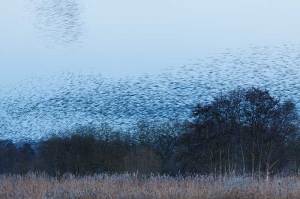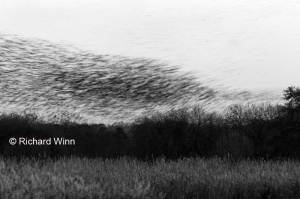During the few days from the 20th of November, through to the 23rd of November, the UK and Southwest England in particular, where hit with a large amount of rain. On the 21st alone, up to 60mm fell in some areas. Exeter, in Devon, used to flood badly in the areas around the River Exe, until the building of a flood prevention scheme was built in the 1960’s; this only just held back the flood waters, resulting in a raging torrent in the flood prevention channels. Just outside of Exeter, upstream, the river burst its banks flooding the mainline railway into the Southwest. In Tiverton, to the northeast, the Grand Union Canal had a partial collapse. Cornwall and Dorset were also badly hit and two red alerts were issued in Cornwall, with a major threat to life. The flooding was exacerbated from the extremely wet spring summer, causing the ground to be saturated, therefore being less able to absorb the rainfall.
 In Somerset, flooding is an annual event on the Levels and the whole landscape is built around flood defence. There are many spillways from the network of rivers that wind there way across the moors and marshes, not to mention hundreds of man-made Rhynes and even river systems to help drain the floodwater away. These spillways divert the water away from the rivers onto the low lying moors, deliberately flooding the farmland to protect the major towns of Taunton and Bridgwater, but also to help protect some of the small towns and villages directly on the Levels. This event was different however. The spillways worked as normal and the pumps were pumping water further downstream into the River Parrett, where it could pass out to the Bristol Channel. However, the whole system simply couldn’t cope with the rainfall and the water volumes involved. There are four main rivers, flowing down from the Quantock Hills, Brendon Hills and Blackdown Hills onto the Somerset Levels, converging on the Parrett before flowing out to the Bristol Channel. The Rivers Isle and Yeo meet the Parrett near the town of Langport and the Parrett burst its banks, flooding one of the trading estates. Further upstream, the Yeo also burst its banks, as did the Parrett, cutting off the village of Muchelney.
In Somerset, flooding is an annual event on the Levels and the whole landscape is built around flood defence. There are many spillways from the network of rivers that wind there way across the moors and marshes, not to mention hundreds of man-made Rhynes and even river systems to help drain the floodwater away. These spillways divert the water away from the rivers onto the low lying moors, deliberately flooding the farmland to protect the major towns of Taunton and Bridgwater, but also to help protect some of the small towns and villages directly on the Levels. This event was different however. The spillways worked as normal and the pumps were pumping water further downstream into the River Parrett, where it could pass out to the Bristol Channel. However, the whole system simply couldn’t cope with the rainfall and the water volumes involved. There are four main rivers, flowing down from the Quantock Hills, Brendon Hills and Blackdown Hills onto the Somerset Levels, converging on the Parrett before flowing out to the Bristol Channel. The Rivers Isle and Yeo meet the Parrett near the town of Langport and the Parrett burst its banks, flooding one of the trading estates. Further upstream, the Yeo also burst its banks, as did the Parrett, cutting off the village of Muchelney.
 Further downstream, at the convergence of the Rivers Parrett and Tone, more chaos ensued, as the Athelney Spillway and the various pumping stations and other Spillways were overwhelmed. North Moor, Curry Moor, Salt Moor, Stan Moor and Southlake moor all flooded as normal, but the flood water kept rising, until it breached the raised A361 road in a number of places, resulting in closure of the road, as well as the nearby A372. The villages of East Lyng and Burrowbridge were also cut off for a time. The amount of rain was so great, that the water levels on the Levels and Moors were still rising a week later, thanks to the runoff from the surrounding hills. At one point, the water was rising at a rate of 3 centimetres each day, over a huge area. Extra mobile pumps were installed to try to pump out the flood water, but the rivers were so full, that pumping downstream became an issue, particuarly as the heaviest rain coincided with a high tide, putting the large town of Bridgwater at risk from sea encroachment.
Further downstream, at the convergence of the Rivers Parrett and Tone, more chaos ensued, as the Athelney Spillway and the various pumping stations and other Spillways were overwhelmed. North Moor, Curry Moor, Salt Moor, Stan Moor and Southlake moor all flooded as normal, but the flood water kept rising, until it breached the raised A361 road in a number of places, resulting in closure of the road, as well as the nearby A372. The villages of East Lyng and Burrowbridge were also cut off for a time. The amount of rain was so great, that the water levels on the Levels and Moors were still rising a week later, thanks to the runoff from the surrounding hills. At one point, the water was rising at a rate of 3 centimetres each day, over a huge area. Extra mobile pumps were installed to try to pump out the flood water, but the rivers were so full, that pumping downstream became an issue, particuarly as the heaviest rain coincided with a high tide, putting the large town of Bridgwater at risk from sea encroachment.
 Two weeks after the event, water levels are beginning to recede, but the village of Muchelney remains cut off and the A361 is still closed, although some drivers are attmepting to drive through. High sided vehicles seem to get through ok, albeit slowly, but it is still impassible for cars. After looking at maps, trying to determine exactly where the road was closed, I decided to drive to Burrow Mump, near the Tone and Parrett convergence, yesterday to view the extent of the floods. Even two weeks after the flooding and despite receding, the flooding is extensive, with water up to the base of the hill at a couple of points.
Two weeks after the event, water levels are beginning to recede, but the village of Muchelney remains cut off and the A361 is still closed, although some drivers are attmepting to drive through. High sided vehicles seem to get through ok, albeit slowly, but it is still impassible for cars. After looking at maps, trying to determine exactly where the road was closed, I decided to drive to Burrow Mump, near the Tone and Parrett convergence, yesterday to view the extent of the floods. Even two weeks after the flooding and despite receding, the flooding is extensive, with water up to the base of the hill at a couple of points.
With winter only just arriving, the chances of more heavy rain, falling onto the flooded landscape makes it look pretty bleak for those living in the flooded areas. With the floods not expected to recede for a few months, any rain will just exacerbate the problem.
Related articles
- UK floods: Muchelney villagers stranded for 12 DAYS after only access road is flooded under 6ft of water (dailymail.co.uk)
- Heavy rain causes flood problems (bbc.co.uk)



